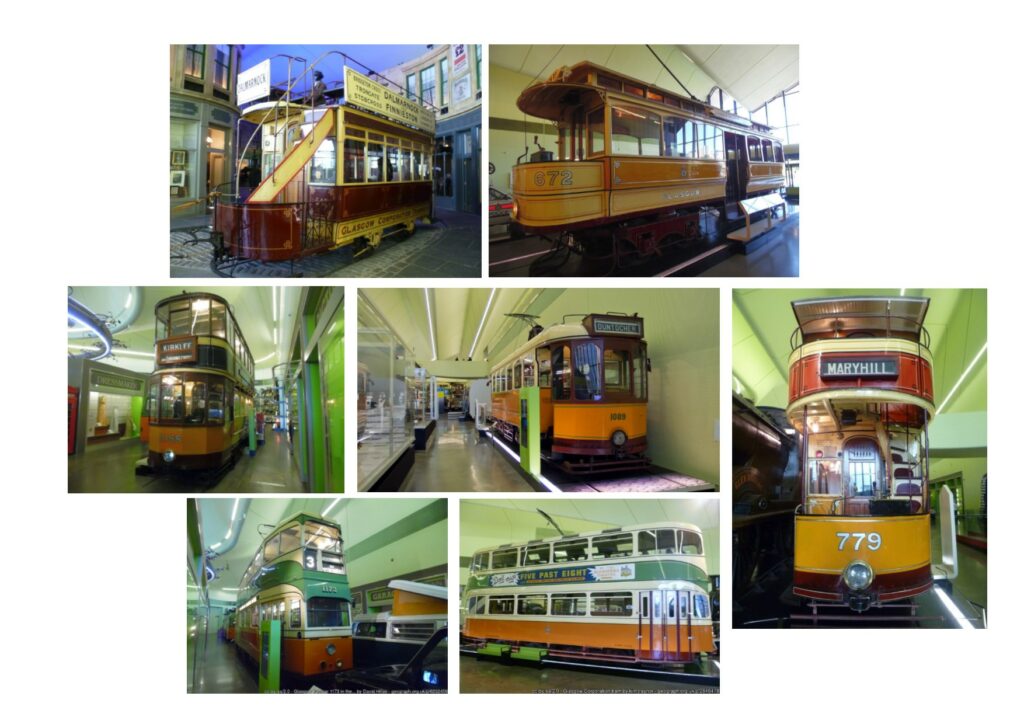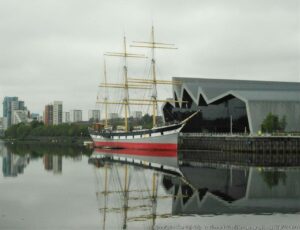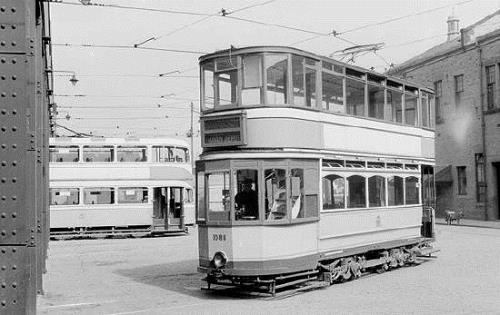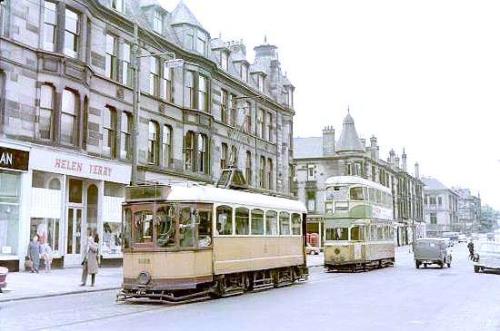2024 marks the 60th anniversary of the formal opening of Glasgow’s first Transport Museum on 14 April 1964. At that time, the Tramway Museum Society had been established for almost a decade. Having acquired the premises at Crich in 1959, the TMS operated its first electric tramcar service in 1964. By this stage, Crich had acquired a number of Glasgow Corporation passenger tramcars and works vehicles. These now form a valuable part of the National Tramway Museum collection – you can find out more about the Glasgow vehicles at Crich on our ‘Tramcar Collection’ webpage here.
The idea for a transport museum in Glasgow had been conceived in 1958 in the run-up to the closure of the city’s tramway, which took place on 2nd September 1962. The aim was to provide a permanent home for some of the historic vehicles that were soon to be decommissioned. Seven trams were eventually selected for preservation on the basis that they represented some of the key phases in the evolution of the Glasgow tramcar. They included:
- The only surviving Glasgow horse tram, no. 543, which dates back to 1893.
- One of the celebrated ‘Room & Kitchen’ cars (no.672, built in 1898), whose layout was thought to resemble that of Glasgow tenement flats.
- Standard tramcar 779 (built in 1900 as an open-topped car), whose updated bodywork was returned to the type of styling that would have been around in 1910 when top covers had been provided but balconies were left open.
- No. 1088, which depicts the ultimate fully enclosed form of Glasgow’s Standard tramcar.
- A one-off, experimental type of high-speed single-deck bogie tram – 1089 – also known as ‘Bailie Burt’s car’. This was built in 1926 with a view to providing an inter-urban service to Airdrie, for which it proved unsuitable.
- No. 1173 – a Mark 1 Coronation tram, built in 1938 to a very high level of specification.
- One of the latest tramcars to be built for the Glasgow fleet, Cunarder 1392, which was built in 1952.

The seven trams preserved for Glasgow’s first Transport Museum, which opened in 1964.
The first home for the collection was the former Coplawhill tram depot where, for many years, the city’s tramcars had been built and serviced. In subsequent years, the tramcars were joined by an expanding collection of vintage cars, bicycles, locomotives and various other forms of land transport. Eventually this outgrew the available space in a building that was gradually deteriorating and becoming more costly to maintain. So, in 1988 the museum moved to the recently refurbished Kelvin Hall, a former exhibition and concert venue, where it remained until 2010. It was then relocated once more to a new purpose-built Riverside Museum that was designed by the renowned firm of architects led by Dame Zaha Hadid. With its riverside location on the site of a former shipyard, the museum is now able to host maritime exhibits such as the three masted steel-hulled cargo ship (and former sail training ship), the Glenlee, together with its comprehensive collection of land-based forms of transport.

Image 8: The Tall Ship Glenlee, berthed outside the Riverside Museum building, Glasgow.
The photographic archive at the National Tramway Museum, Crich, contains historic images of several of the tramcars that are now on display in Glasgow’s Riverside Museum. You can browse through some of our photographic collection via our online catalogue here: https://www.tramway.co.uk/library-collections/online-catalogue/ The library at Crich also contains a large collection of books featuring various aspects of Glasgow’s extensive and fascinating tramway including several guides to the Museum of Transport itself.

Image 9: Glasgow 1088 photographed at Govan depot by H B Priestley on 15/4/1954 (National Tramway Museum collection).

Image 10: Glasgow 1089 photographed on Albert Drive by M J O’Connor on 2/6/1962 (National Tramway Museum collection).
Find out more about Glasgow Riverside Museum on their website: https://www.glasgowlife.org.uk/museums/riverside-museum
With thanks to Museum volunteer Jim Dignan for producing this article.
Image references:
All images except those sourced from The National Tramway Museum collection are Licensed for reuse under Creative Commons Licence cc-by-sa/2.0.
Image 1: Glasgow 543, Glasgow’s only remaining horse-drawn tram. © kim traynor – geograph.org.uk/p/2846434
Image 2: Single deck tramcar 672 in the Riverside Museum.
cc-by-sa/2.0 – © David Hillas – geograph.org.uk/p/6241511
Image 3:Glasgow Corporation standard tramcar 779.
cc-by-sa/2.0 – © kim traynor – geograph.org.uk/p/2846463
Image 4: Glasgow tramcar 1088 in the Riverside Museum.
cc-by-sa/2.0 – © David Hillas – geograph.org.uk/p/6231556
Image 5: Glasgow Corporation Tramways 1089 at the Riverside Museum.
Image 6: Glasgow tramcar 1173 in the Riverside Museum.
cc-by-sa/2.0 – © David Hillas – geograph.org.uk/p/6232456
Image 7: Glasgow Corporation tram 1392.
cc-by-sa/2.0 – © kim traynor – geograph.org.uk/p/2846478
Image 8: The Tall Ship Glenlee, berthed outside the Riverside Museum building.
cc-by-sa/2.0 – © Richard Sutcliffe – geograph.org.uk/p/7164930
Image 9: Glasgow 1088 photographed at Govan depot by H B Priestley on 15/4/1954 (National Tramway Museum collection).
Image 10: Glasgow 1089 photographed on Albert Drive by M J O’Connor on 2/6/1962 (National Tramway Museum collection).
